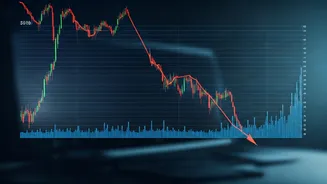Market's Recent Tumult
On October 24th, the Bank Nifty index faced a setback, falling below the 58,000 threshold. This shift reflected a trend of investors opting to secure their
profits, a common strategy when an index reaches its peak. Before the decline, the Bank Nifty had scaled to an all-time high, signaling a period of remarkable growth. This peak was subsequently followed by the profit-booking phase. The decline serves as a reminder of market volatility and the quick shifts that can occur in response to investor actions and market sentiment, especially following periods of rapid growth. The day's events highlight the impact of investor sentiment on the financial markets.
Technical Level Assessment
The decline below 58,000 necessitates an examination of significant technical levels. These levels function as crucial indicators, providing insight into potential support and resistance zones. As the index moved lower, market analysts and traders were closely watching key support levels. The breach of the 58,000 mark suggests a shift in momentum, with the focus turning toward identifying the next levels where buying interest may re-emerge. Resistance levels also come under scrutiny, as they can signal areas where selling pressure could increase. Analyzing these levels allows market participants to refine their strategies and make informed decisions during periods of volatility. Assessing these levels provides a framework to anticipate future price movements.
Impactful Sector Drops
The downturn in the Bank Nifty index was largely influenced by the performance of specific stocks within the banking sector. The article highlights certain stocks that were the main contributors to the downward movement. The focus on these top losers helps illustrate which companies and sectors were most negatively affected by the profit-booking phase. The banking sector’s contribution to the overall market movement often holds significant weight. By identifying the key losers, one can better understand the underlying dynamics and the forces driving the price correction. This analysis gives an understanding of which companies played a crucial role in pulling down the index. It is a critical aspect for grasping the breadth and depth of the market shift.











